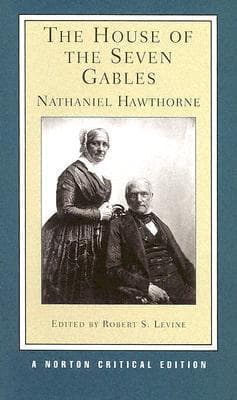
Book Review Summary: The House of the Seven Gables
Introduction
"The House of the Seven Gables" is a novel written by Nathaniel Hawthorne, a prominent 19th-century American novelist known for his exploration of themes related to human guilt and the legacy of colonial history. This book, published shortly after "The Scarlet Letter," delves into the concept of inherited guilt and how it affects the lives of the characters. Set in a haunted New England mansion, the story unfolds as the characters grapple with their past sins and the consequences that follow them.
About Nathaniel Hawthorne
Nathaniel Hawthorne, born in Salem, Massachusetts, was a key figure in the development of American literature. He is known for his tales of the nation's colonial history and his exploration of moral allegories with a Puritan inspiration. Hawthorne's writing style is characterized by its descriptive virtuosity and its mix of fantasy and realism. He is considered part of the Romantic movement, which emphasizes individualism, emotion, and imagination.
Analysis of Views
-
Themes of Guilt and Generational Sin: Many readers appreciate the exploration of themes related to guilt and generational sin in "The House of the Seven Gables." The characters' connectedness, despite their attempts to run away from their past sins, adds depth to the story. The darker gothic tone of the novel, with its haunted house and supernatural elements, also resonates with readers.
-
Descriptive Imagery: The descriptive imagery in the book is praised for its ability to carry the story forward. The moonbeams quivering through the shadows and the eerie atmosphere of the house contribute to the overall haunting experience.
-
Historical Context: Readers appreciate the historical context provided by Hawthorne's exploration of Salem's witchcraft trials. The connection between the Pyncheon family and their involvement in these trials adds an extra layer of intrigue to the story.
-
Slow Pacing: Some readers find the pacing of the book to be slow and tedious at times. This can make it challenging to stay engaged with the story, especially for those who prefer faster-paced narratives.
-
Symbolism and Imagery: The symbolism and imagery used in "The House of the Seven Gables" are highly praised by readers. The house itself is seen as a character, representing both physical decay and moral corruption. The seven gables symbolize both the family's past sins and their inability to escape their legacy.
Reasons for Recommendation
-
Themes of Guilt and Generational Sin: The exploration of themes related to guilt and generational sin resonates with readers, making "The House of the Seven Gables" a thought-provoking read.
-
Descriptive Imagery: The vivid descriptions and imagery used in the book enhance the overall reading experience, transporting readers into the haunted world created by Hawthorne.
-
Historical Context: The incorporation of Salem's witchcraft trials adds an extra layer of interest for readers who appreciate historical context in their literature.
-
Symbolism and Imagery: The symbolism and imagery used in the book contribute to a deeper understanding of the story's themes and add depth to the characters' motivations.
Reasons for Not Recommendation
-
Slow Pacing: Some readers find the pacing of the book to be slow, which can make it challenging to stay engaged with the story. This may not be suitable for those who prefer faster-paced narratives.
-
Descriptive Language: The descriptive language used by Hawthorne may be seen as challenging for modern readers due to its complexity and ornate style. This may result in difficulty in comprehension or enjoyment of the book.
Conclusion
"The House of the Seven Gables" by Nathaniel Hawthorne is a classic novel that explores themes related to guilt, generational sin, and colonial history. While some readers appreciate its slow pacing and descriptive imagery, others find it challenging due to its complex language and ornate style. However, those who enjoy thought-provoking stories with historical context and symbolism will likely find this book rewarding. Overall, "The House of the Seven Gables" remains a significant work in American literature that continues to captivate readers with its haunting tale of a haunted New England mansion and its dark legacy.